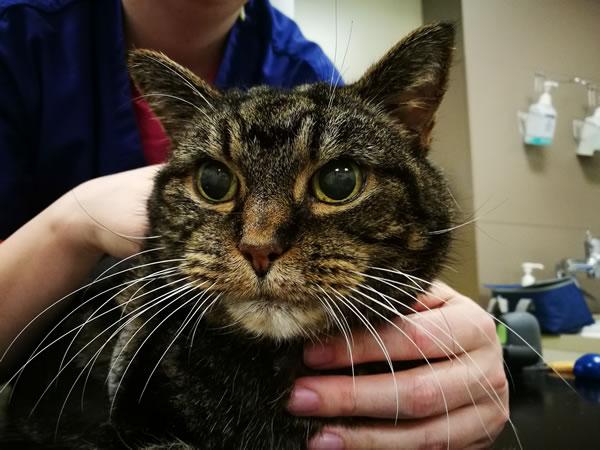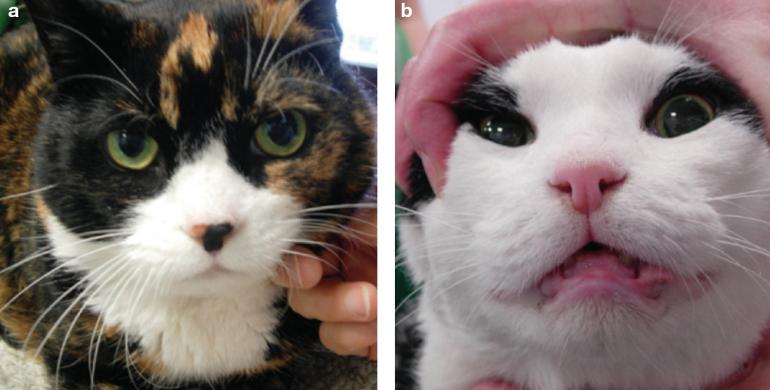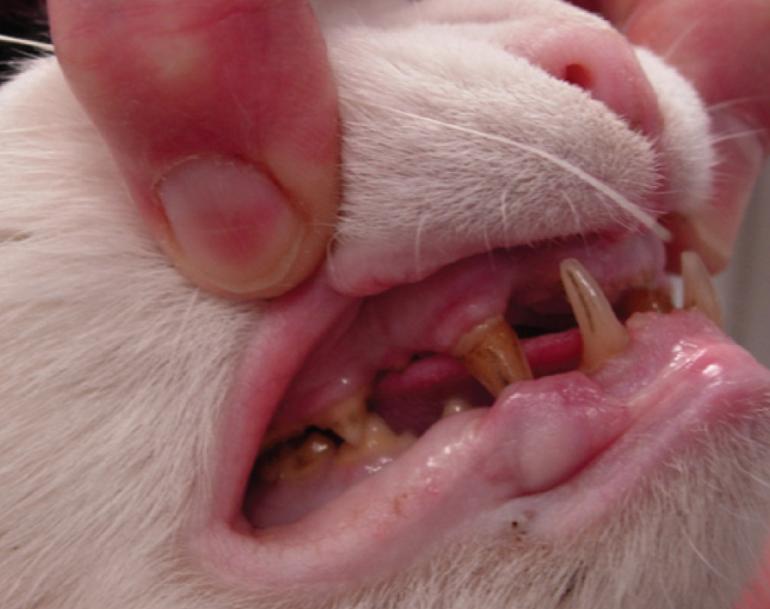Acromegaly in cats Causes, Symptoms, and Treatment

Acromegaly is a rare hormonal disorder that affects cats, causing excessive growth of bones and tissues. While it is uncommon, understanding this condition is crucial for cat owners and veterinarians alike. This article explores the causes, symptoms, diagnosis, and potential treatments for feline acromegaly.
Acromegaly in cats
Acromegaly can be caused by excessive hormone production in the brain or in mammary gland (breast) tissue. Acromegaly due to excessive hormone production in the brain is more common in cats than dogs. Affected cats can develop gradual changes in their appearance but because the disease develops over a long period of time owners may not notice any problems.
Some cats become extremely hungry or start drinking and needing to use the litter tray more frequently. Often it is the vet who notices the change in a cats appearance, when cats are presented because of the changes in appetite or increased drinking and may recommend further investigation. If the disease is not treated more serious problems like kidney disease, high blood pressure, permanent diabetes, joint problems, seizures and heart problems can develop. It is important to get a diagnosis as early as possible if treatment is to be effective.
What causes acromegaly?
Overproduction of growth hormone, which promotes the growth of bodily tissues as its name implies, is the cause of amegaly. The body's numerous tissues enlarge if too much growth hormone is released, which might be problematic for the cat. Because growth hormone also affects how well insulin functions, cats with acromegaly frequently have diabetes, which can be extremely difficult to manage and necessitate greater insulin dosages than is typical for cats with diabetes.
The pituitary gland, a specialized area of the brain, produces growth hormone. Growth hormone levels within the body are typically well regulated. Signals are generated when the pituitary gland has produced enough growth hormone to stop generating more. The most common cause of amegaly is a little tumor in the pituitary gland that ignores instructions to stop producing growth hormone.
How would I know if my cat had acromegaly?
Males are more likely than females to have aromegaly, and it typically affects middle-aged or older cats (8–14 years). Since acromegaly's physical symptoms can be subtle and develop gradually, an owner who sees their cat on a daily basis might not be aware of changes in appearance. Sometimes the only way to see how much your cat has changed is to look at old pictures of them. The most obvious way to observe the widening of the face caused by amegaly is sometimes to look at the teeth, which enlarge the gap between them as the bone expands.
Many times, when a cat exhibits the symptoms of diabetes—such as increased eating, frequent urination, and excessive drinking—owners discover there is a problem. Insulin injections may be prescribed by your veterinarian upon initial diagnosis of uncomplicated diabetes in your cat. Your veterinarian will wish to perform additional testing if, after some time, your cat does not appear to be responding to the injections as planned. An acromegaly diagnosis may be made if it is found that your cat is resistant to the effects of insulin.
Symptoms of Acromegaly in Cats
Recognizing the signs of acromegaly is essential for early diagnosis and intervention. Common symptoms include:
-
Enlarged facial features: Cats with acromegaly often develop a broad, thickened face due to the abnormal growth of bones and tissues.
-
Enlarged paws: The bones in the paws may grow abnormally, causing them to become larger than usual.
-
Altered vocalization: Cats might experience changes in their meow or other vocalizations.
-
Increased appetite and thirst: Affected cats may show a significant increase in appetite and water consumption.
-
Lethargy: Cats with acromegaly may become less active and display signs of weakness or fatigue.
-
Organ enlargement: Internal organs such as the liver, kidneys, and heart can also enlarge, leading to various health complications.


How will my vet know that my cat has acromegaly?
Acromegaly may be diagnosed by your personal veterinarian, or they may recommend that your cat consult a specialist to look into one of the issues associated with acromegaly.
A veterinarian might be wary of acromegaly based on your cat's look. In the unlikely event that blood tests reveal very high levels of sugar (glucose) in the blood and urine, your cat may already have been diagnosed with diabetes. It's also possible that repeated blood tests will reveal that your cat is not reacting as well to insulin injections.
Ultrasonography and X-rays may reveal that your cat has kidney, bone, and joint abnormalities, or an enlarged heart (or, if the changes have been there for a long time, even heart failure). Hormone levels in the blood can be measured with blood tests, but the results can take a while to get back and are frequently submitted to specialized laboratories.
If you are thinking about treating your cat, you will need to get a brain scan (MRI or CAT scan) in order to try and see the development in the pituitary gland.
Can acromegaly be treated?
Since brain cancer is extremely difficult to remove, surgery would not be common in the UK. Radiation therapy is a tool that certain facilities can employ to target the malignant growth in the brain. As of right now, no overt adverse effects have been observed in cats, and the medication appears to be well tolerated. A general anesthetic is necessary for radiotherapy, which can only be administered in specialized facilities. Should you want to proceed with this treatment, your cat would need to accompany you to the facility for multiple sessions spread over several weeks (your cat might be able to board in the hospital for the duration of treatment). Tablet forms of medications that block the production of growth hormone are available; however, these are typically not particularly effective.
Treatment options include:
-
Surgery: If the tumor causing acromegaly is operable, surgical removal might be attempted. However, the location of the pituitary gland can make this procedure challenging.
-
Medications: Certain medications, such as somatostatin analogs, can help regulate growth hormone levels and alleviate symptoms.
-
Radiation therapy: In cases where surgery is not possible or unsuccessful, radiation therapy can be employed to shrink the tumor and reduce hormonal secretion.
-
Supportive care: Managing the cat’s symptoms through pain relief, proper nutrition, and supportive medications can improve their quality of life.
-

Will my cat get better?
The high amount of hormones will decrease if the cancer is eradicated, and the symptoms of acromegaly should eventually go away. Nevertheless, certain organs can already be too damaged at the time of diagnosis for a full recovery, and some changes might not go away even with treatment. Cats with diabetes often have much lower insulin needs, but your cat can still need daily insulin injections. A considerable proportion of cats either fully recover from their diabetes or see an improvement in the indications associated with brain expansion as a result of the growth shrinking.
What will happen to my cat if it is not treated?
If they are not treated, cats with acromegaly often only live about 18 months after being diagnosed. It is highly likely that they will have diabetes, which could be exceedingly challenging to manage with insulin shots. Nonetheless, it's critical to continue insulin therapy since if you didn't, your diabetes symptoms would worsen. The majority of cats eventually pass away from various illness-related issues including renal or cardiac failure.
Conclusion
Acromegaly in cats is a complex condition that requires careful management and a comprehensive approach. Early detection and intervention are essential to improve the cat’s well-being and enhance its quality of life. If you suspect your cat might be showing symptoms of acromegaly, it is crucial to consult a veterinarian promptly. With proper veterinary care and attention, affected cats can lead comfortable lives despite this challenging condition.


